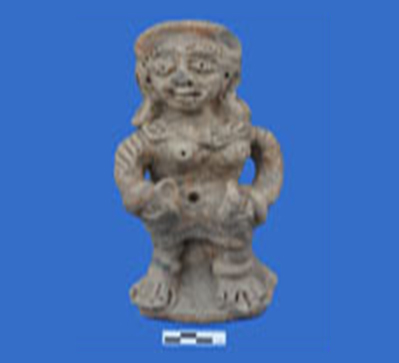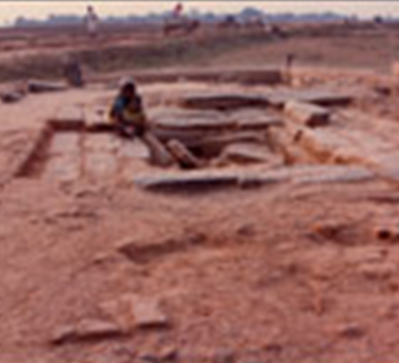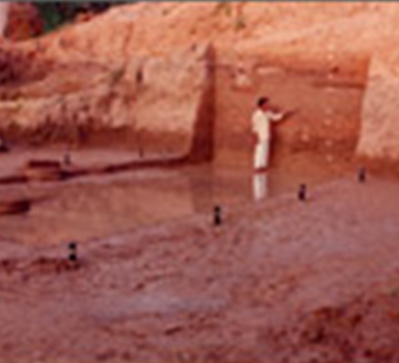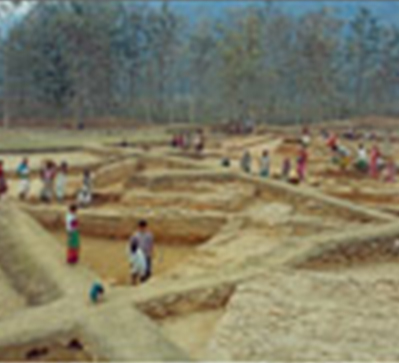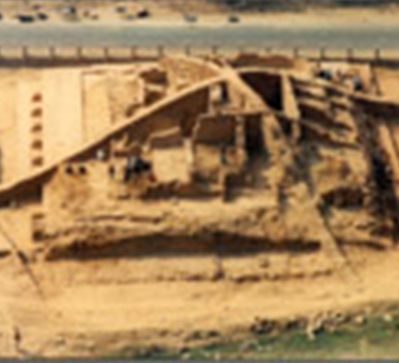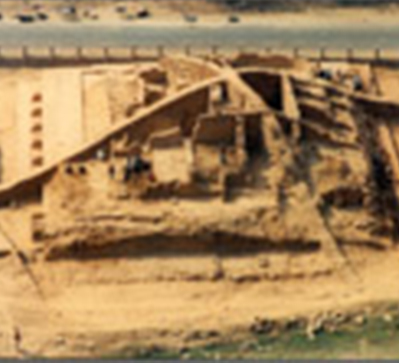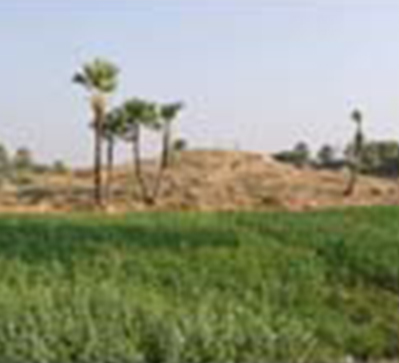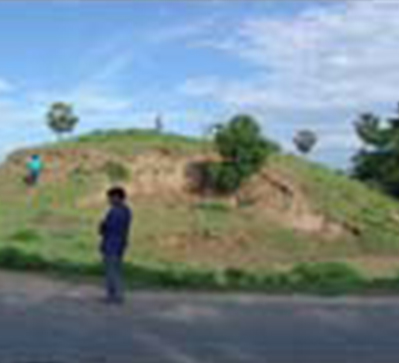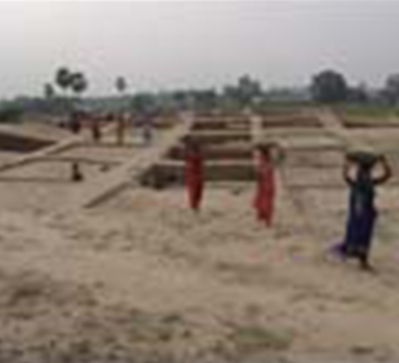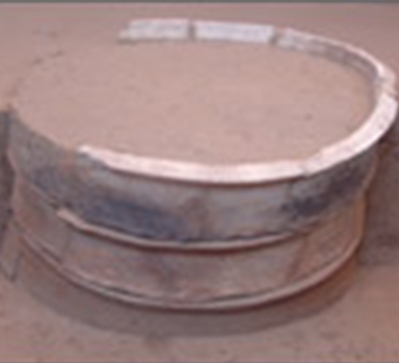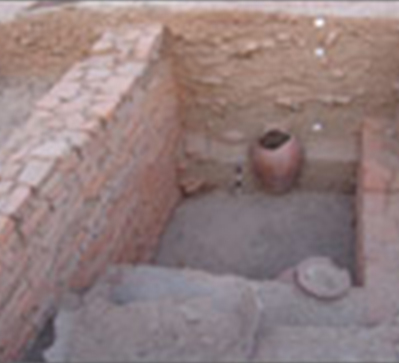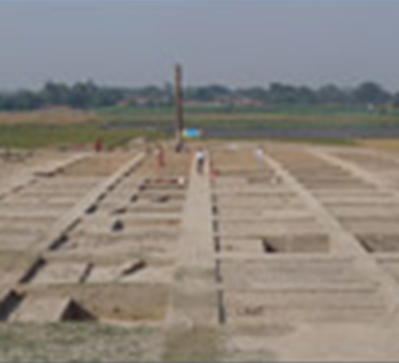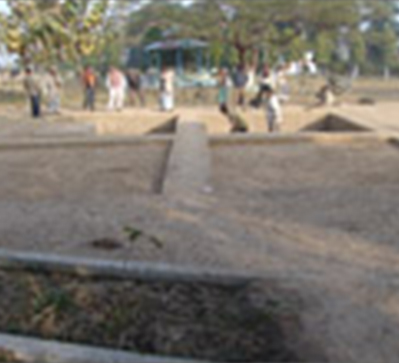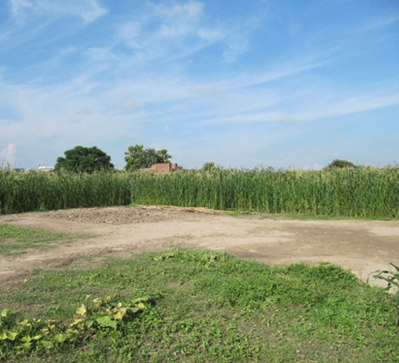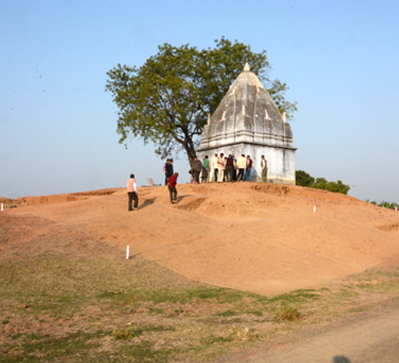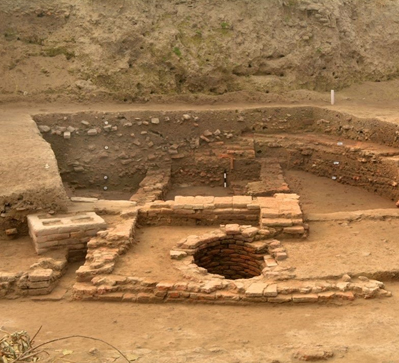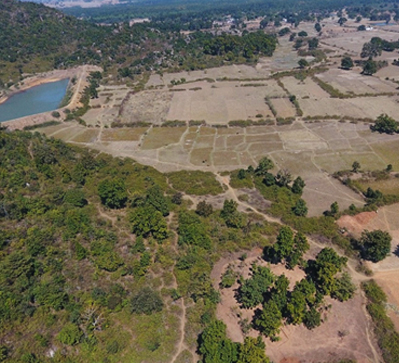Lathiya
| Location | Lat 250 23’ 37”N, Long 830 34’ 53”E |
| District | Ghazipur |
| State | U.P. |
| Excavation Years | 2009-2010 |
| Director of Excavations | B.R.Mani |
| Assisted by | S.K.Manjul, I.D.Dwivedi, Arvin Manjul, S.Nayan, J.K.Tiwari, Ashish Kumar & Neetesh Saxena. |
Archaeological site Lathiya is located about 20kms. south-east of Ghazipur and about 4 kms. from Zamaniya railway station. The village as well site derive its name after a Gupta pillar standing on the western fringe of the mound.
The Excavation started at the site with the aim to confirm the association of the monolithic pillar with the possible structures buried beneath the earth which is inferred by a huge amount of brick bats scattered on the site. The other objective was to know the culture sequence of the site.
On the basin of ceramic industries, antiquities and other material culture recovered from the site, two fold cultural sequence was established.
| Period I | Sunga and Kushana period |
| Period II | Gupta Period |
The ceramic industry recovered are ranged from Sunga –Kushana to Gupta period. Pottery of period I is represented by black slipped ware, black were, black and red ware, grey ware and red ware. The fabric of the potsherds mostly of red ware was from course to medium. The pottery types were mostly utilitarian which includes vases, lids, sprinklars, spouted vase and bowls. In the subsequent period, the Gupta period red were and red slipped pottery represented by vase storage jar, basin, Lota, Lid, sprinklars and bowls became predominant. Some stamped sherds were also found from this lable. Varaha shaped spouts are the special features of this period.
Four brick temples of Gupta period has been found mostly in the form of ghost walls. All these temples are facing east and having the same plan. These were composed of two architectural units, the sanctum (Garbha Griha) and mandapa. Stone pillar is situated west of the temple group. Temple No.1 and 2 and its enclosure wall were constructed in period II phase I and temple No. 3 and 4 were constructed in Phase II of same period.
The antiquities recovered from the excavation included terracotta inscribed sealings and a ring cum seal made of copper with inscriptions in Gupta Brahmi character are noteworthy. Other antiquities were beads of terracotta, glass, and stone; terracotta human, animal, bird and snake figurine; copper punch marked and cast coins; gold plated copper ring; bangles of shell, terracotta and copper; ivory pendants, tortoise shaped terracotta pendants, iron sickles and Khurpi; stone querns, muller, sculpture fragments etc.














